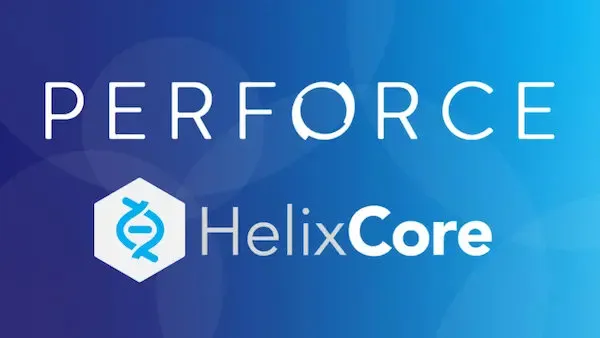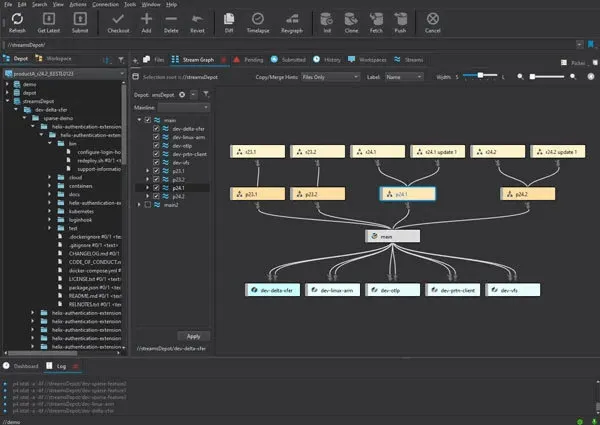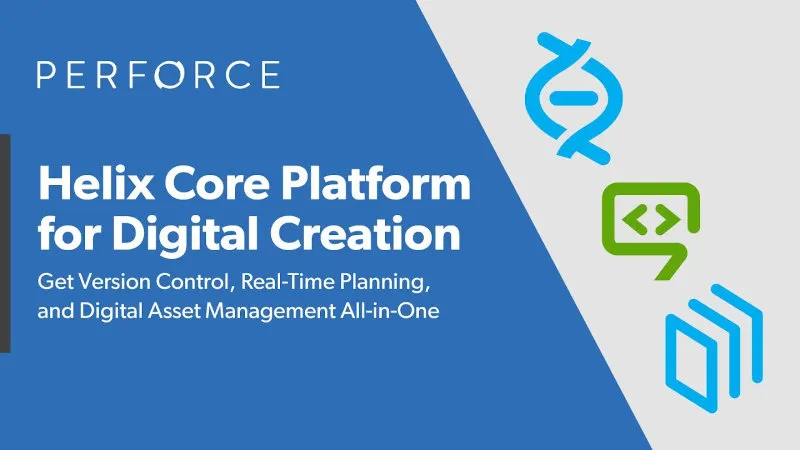
Perforce Helix Core: The King of Version Control for Massive Scale
Table of Contents
- Key Features at a Glance
- The Helix Core Philosophy: Who Is It For?
- GitHub (Git) vs. Perforce Helix Core: A Quick Comparison
- Pros and Cons
- Getting Started & Further Reading
- FAQ
- Conclusion
When discussing alternatives to GitHub, we are typically talking about other platforms that host Git repositories. Perforce Helix Core breaks this mold entirely. It is not a Git hosting platform; it is a different version control system with its own architecture, designed to solve problems that Git fundamentally struggles with.
Helix Core is the undisputed champion in industries that work with massive files and enormous monorepos. It is the go-to version control system for AAA game development, semiconductor design, visual effects, and other fields where source code is just one piece of a much larger puzzle of digital assets.
Key Features at a Glance

Helix Core’s features are born from its centralized architecture and its focus on performance at an enterprise scale.
| Feature | Description | Key Benefit |
|---|---|---|
| Centralized Architecture | Unlike Git’s distributed model, Helix Core uses a client-server model. There is one single, authoritative server that acts as the source of truth. | Provides unmatched control, security, and visibility over all digital assets. It’s clear who changed what and when. |
| Unmatched Binary File Handling | This is its killer feature. Helix Core is optimized to store and transfer only the changed portions (deltas) of large binary files, not the whole file. | Massively reduces storage requirements and network transfer times when working with multi-gigabyte art assets, CAD files, or videos. |
| Extreme Scalability (Monorepos) | Engineered to handle repositories containing terabytes of data and millions of files with high performance. | Powers the world’s largest development projects without the performance degradation Git experiences in massive monorepos. |
| Perforce Streams | A powerful and structured branching methodology that guides developers through a defined workflow for features, releases, and mainline development. | Enforces a clear, manageable workflow, reducing merge complexity and providing a visual map of how code flows through the development lifecycle. |
The Helix Core Philosophy: Who Is It For?
The philosophy of Perforce Helix Core is to be the single source of truth for all digital assets, at any scale. It’s built for environments where performance, security, and the ability to manage more than just source code are paramount.
This makes it the industry-standard choice for:
Game Development Studios: For managing code, 3D models, textures, audio, and video in one place.
Semiconductor Companies: For managing massive electronic design automation (EDA) files alongside firmware.
VFX and Animation Studios: For versioning huge video files, render assets, and shot data.
Any Enterprise with a “One Big Repo” Strategy: Organizations that require a single, scalable monorepo for all their projects and assets.
If your project involves files that are too large for Git LFS to handle gracefully, or your repository is growing into the millions of files, you are the target audience for Helix Core.
GitHub (Git) vs. Perforce Helix Core: A Quick Comparison

This is a comparison of two fundamentally different technologies and philosophies for version control.
| Aspect | GitHub (using Git) | Perforce Helix Core |
|---|---|---|
| VCS Model | Distributed: Every developer has a full copy of the repository history. | Centralized: A single server holds the authoritative history. |
| Best Use Case | Source code collaboration, open source, web development. | Enterprise-scale digital asset management (code + binaries). |
| Binary File Handling | Inefficient. Stores full copies of binary files with each change. (Git LFS helps but has limits). | Highly efficient. Uses delta compression to store only the changes. |
| Branching Model | Flexible, lightweight, and un-opinionated branches. | Structured, hierarchical, and policy-driven “Streams.” |
Pros and Cons
Why You Might Choose Perforce Helix Core
Superior Performance with Large Files: It is orders of magnitude faster and more efficient than Git for versioning binary assets.
Massive Scalability: It can handle repository sizes and file counts that would bring Git to a standstill.
Granular Security and Access Control: The centralized model allows for fine-grained permissions on a per-file or per-directory basis, which is critical for securing intellectual property.
Atomic Commits: Changesets can span multiple files and are committed in a single, atomic transaction, ensuring the repository is always in a consistent state.
Potential Drawbacks

It’s Not Git: This is the biggest hurdle for many. It requires learning a new set of commands, a new client (P4V), and a new way of thinking about version control.
Requires Server Administration: As a self-hosted, client-server system, it requires dedicated infrastructure and administration.
Licensing Costs: While free for small teams (up to 5 users), it is a premium enterprise product, and licensing for larger teams can be a significant investment.
Less Community Integration: The open-source and web development ecosystems are built around Git. You’ll find fewer third-party integrations and community resources for Helix Core compared to GitHub.
Getting Started & Further Reading
Ready to explore the version control system built for massive scale? Check out the official resources.
Official Website: https://www.perforce.com/products/helix-core
Documentation: https://www.perforce.com/manuals/helix-core-user/
Free for Small Teams: https://www.perforce.com/solutions/free-perforce
Perforce Community: https://community.perforce.com/s/
FAQ
Q: Can Helix Core integrate with Git?
A: Yes, Perforce offers tools like GitSwarm and Helix Git Fusion, which allow Helix Core to interoperate with Git repositories, enabling teams to use Git locally while leveraging Helix Core’s centralized server for large assets.
Q: Is Helix Core suitable for small teams or startups?
A: Helix Core is free for up to 5 users, making it accessible for small teams. However, its complexity and administrative overhead may be overkill for teams without large binary assets or monorepos.
Q: How does Helix Core handle large binary files compared to Git LFS?
A: Helix Core uses delta compression to store only the changed portions of binary files, making it far more efficient than Git LFS, which stores full copies of files and struggles with very large assets.
Q: What kind of infrastructure is needed for Helix Core?
A: Helix Core requires a dedicated server for its centralized architecture. Perforce offers cloud-hosted options, but self-hosted setups need robust hardware and administrative expertise for optimal performance.
Q: Is Helix Core open-source friendly?
A: While Helix Core can be used for open-source projects, it lacks the community and public repository features of GitHub, making it less ideal for open-source collaboration compared to Git-based platforms.
Conclusion
Perforce Helix Core is not a “better GitHub.” It is a different and more powerful tool for a different set of problems. It excels where Git falters: managing enormous files and monorepos at an enterprise scale. For teams in game development, hardware design, or any field that deals with a mix of code and massive binary assets, Helix Core isn’t just an alternative; it is the proven, professional standard.